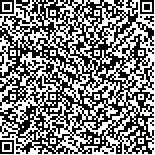禄熠行,孙晓龙,郗宵,等.高频重复经颅磁刺激治疗脊髓损伤后神经病理性疼痛疗效的影响因素分析[J].中华物理医学与康复杂志,2025,47(3):226-231
扫码阅读全文

|
| 高频重复经颅磁刺激治疗脊髓损伤后神经病理性疼痛疗效的影响因素分析 |
|
| |
| DOI:10.3760/cma.j.cn421666-20240828-00698 |
| 中文关键词: 脊髓损伤 神经病理性疼痛 重复经颅磁刺激 |
| 英文关键词: Spinal cord injury Neuropathic pain Transcranial magnetic stimulation |
| 基金项目:国家自然科学基金项目(82272591, 82072534);西京医院医务人员助推项目(XJZT24JC19, XJZT24QN20) |
|
| 摘要点击次数: 1952 |
| 全文下载次数: 1849 |
| 中文摘要: |
| 目的 探讨影响高频重复经颅磁刺激(rTMS)治疗脊髓损伤(SCI)后神经病理性疼痛(NP)疗效的相关因素。 方法 对89例接受高频rTMS治疗的SCI后NP患者进行回顾性分析,将治疗2周后数字疼痛评分法(NRS)评分较治疗前下降≥30%的患者纳入应答组(36例),余患者纳入非应答组(53例)。收集2组患者的人口统计学数据(性别、学历、年龄)、SCI特点(损伤原因、损伤程度、损伤平面、SCI病程)、NP特点(疼痛类型、疼痛程度、镇痛药物使用情况)、功能评估结果(改良Ashworth量表评分、脊髓独立性评定量表评分、改良Barthel指数评分、美国脊髓损伤协会运动及感觉评分)等相关资料。采用最小化绝对收缩和选择算子(LASSO)回归法筛选因子,并将其纳入二元Logistic回归分析,探讨影响疗效的相关因素。 结果 89例患者中,有36例患者(40.4%)对高频rTMS产生了应答。二元Logistic回归分析结果显示,SCI后NP患者对高频rTMS治疗产生应答的相关因素为性别(女性)[比值比(OR)=7.677, 95%置信区间(CI)为(2.363, 24.937), P<0.001]、颈髓损伤[OR=4.470, 95%CI(1.283, 15.570), P=0.019]和痉挛[OR=7.866, 95%CI(2.518, 24.572), P<0.001]。 结论 性别(女性)、颈髓损伤、痉挛是影响高频rTMS治疗SCI后NP疗效的独立相关因素,其中痉挛的相关性最高。 |
| 英文摘要: |
| Objective To explore the factors associated with the efficacy of high-frequency repetitive transcranial magnetic stimulation (rTMS) in the treatment of neuropathic pain (NP) following spinal cord injury (SCI). Methods This was a retrospective study of 89 SCI survivors with NP receiving high-frequency rTMS. Those with a ≥30% reduction in their Numeric Rating Scales (NRS) scores after 2 weeks of treatment were termed Responders (n=36), with the others classified as non-responders (n=53). Demographic data (gender, education level, age), SCI characteristics (injury etiology, injury severity, neurological injury level, injury duration), NP characteristics (pain type, pain intensity, analgesic use), functional assessment (Modified Ashworth Scale score, Spinal Cord Independence Measure score, Modified Barthel Index score, American Spinal Injury Association motor/sensory score) were collected. Least absolute shrinkage and selection operator (LASSO) regression was used for variable selection, followed by binary logistic regression to identify factors associated with treatment efficacy. Results Among the 89 patients, 36 (40.4%) were Responders to high-frequency rTMS. Binary logistic regression revealed that those with a cervical spinal cord injury and/or spasticity and women were more likely to respond to high-frequency rTMS. Conclusions Female gender, cervical spinal cord injury, and spasticity are independent factors predicting rTMS efficacy in treating SCI, with spasticity demonstrating the strongest association. |
|
查看全文
查看/发表评论 下载PDF阅读器 |
| 关闭 |
|
|
|